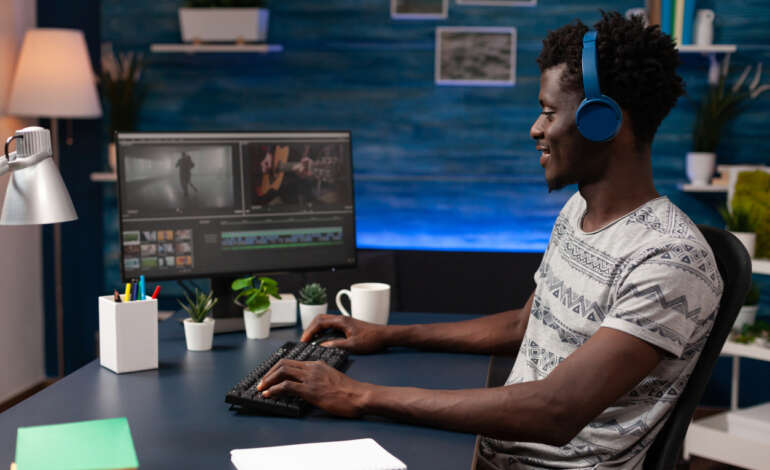[av_image src=’https://ngproductionfilms.com/zeus/wp-content/uploads/2015/04/iStock_000036846968_Full-1500×630.jpeg’ attachment=’2482′ attachment_size=’featured_large’ align=’center’ animation=’no-animation’ styling=” hover=” link=” target=” caption=” font_size=” appearance=” overlay_opacity=’0.4′ overlay_color=’#000000′ overlay_text_color=’#ffffff’][/av_image]
B-roll footage is all about the “in-betweens,” or what you use to tie video sequences and scenes together in your video productions. Audiences are visual creatures, but they can quickly lose interest if the image on the screen is too static. For example, when filming an interview, you may not want to focus on your subject’s face the entire time. Similarly, your commercial could include a shot of your facilities before focusing in on a product demonstration or footage of an employee walking down a hallway as a transitional tool. Here is a variety of tips for capturing great B-roll footage in your next Orlando video production:
Types of B-Roll Material
Broadcast television news reports use B-roll footage in nearly every report, as a way to supplement the story. These cutaways provide a visual break from the newsroom while supplying viewers with additional information about the news story as the voiceover continues. If your commercial or other video project includes a sequence of events or scenes, B-roll footage can be used to tie everything together. You could follow a subject through a room, cut to an exterior shot or product as a voiceover describes it or zoom in on one of your actors’ props as he or she makes a point.
Similarly, if you are filming an interview for your production, then the B-roll footage is everything but the interview itself. You could include close-up shots of your subject’s hands mid-gesture, pan their surroundings, briefly focus on another object in the room, or play with the depth of field by switching between wide and tight shots. In the case of interviews, your B-roll footage does not have to be tightly related. It is simply a way to keep the viewer visually engaged while the interviewee continues to speak.
Start with the Storyboard
B-roll footage is easy to capture because you can include almost anything. People typically run into trouble, however, when they film too much and subsequently have extra hours of footage to sift through in the post-production editing room. In order to make the most of your valuable shooting time, you can plan out some of your B-roll material just as you would the A-roll. As you brainstorm and storyboard your production, include ideas about the types of supplementary footage you might want to include. It should support the story, concepts, atmosphere, and tone or voice of your overall production. In addition to avoiding overshooting, using a storyboard will help you create a tighter, clearer, and more consistent production.
Pull Out the Wide Lens
Using a wide lens to capture B-roll material before the day’s shoot begins will give you very good coverage on location. Lens changes generally take up time, so it may be a good idea for your camera crew to capture all wide lens shots at once. Examples of wide lens B-roll footage include panned exterior or interior shots, or anything that helps to capture and establish your production’s setting and surroundings. Another good use of wide shots is covering entrances and exits, such as your actor walking into your building or through your facilities. With the wide lens on, your crew can also play with tilts and different angles, such as above or below your interview subject or actor’s eye line. Finally, wide shots can be used to create layers and perspective. Blur the background to tighten the focus on important material in the foreground, or blur your subject in order to view his or her surroundings, such as your facilities or the outdoor location.
Capture Subjects in Motion
To make your commercial or corporate video visually engaging, consider including plenty of motion shots. These shots will carry your viewers from one side of the screen to the other, or from one scene into the next. If your on-camera subject is seated or is an inanimate object such as a product or part of your facilities, your production crew can create a sense of life and movement by tilting, panning, or shifting focus. Motion shots are especially useful as B-roll footage because they can easily act as transitional material.
Know When to Keep Still
Capturing motion shots is an important part of video productions, but it must be done properly. Zooming too much or too quickly will result in unusable shots. Your exposure and white balance must also be set before recording. Otherwise, your resulting material will not match the rest of the production. At the same time, try to capture some shots of your interview subject or actors when they are not talking. The idea is to include some candid shots to help keep the production feel natural and fresh.
Putting it Together in Post-Production
As the day of filming approaches, Talk to your video production team about the kind of supplementary footage you would like them to capture, and what kind of sequences you want to build. You can layer material in numerous ways, such as wide pan leading to the first look at your subject, followed by a close-up of props or hands and work before zeroing in on the interview shot. If a certain scene requires a more attentive audience, limit the amount of B-roll footage you include, or use shots that are less active than the others.
Our Orlando video production company, NG Production Films, will help you capture and stich together the very best A- and B-roll footage for your film project. Call us today at 877-203-2895 for a free consultation or fill out our contact form for a prompt reply.


